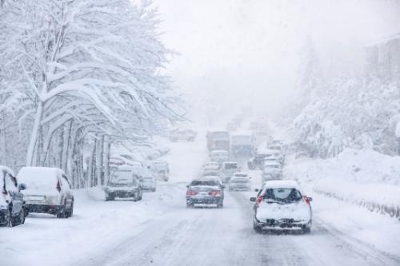Is Your Trunk Roadside Emergency Ready?
 |
BLOOMINGTON, IL--Jan. 7, 2014: Nearly all drivers could improve what is in their trunk to be better prepared for roadside emergencies. A new survey by State Farm and KRC Research shows two-thirds of drivers (67 percent) had some sort of "junk" in their trunk ranging from car detailing equipment to toys and used food or drink containers. Additionally, drivers shared a variety of strange "junk" items in their trunk including an old gorilla costume to an inflatable sheep to a wedding dress. Getting rid of the "junk" (non-emergency supplies) and adding the right supplies will help people deal with the unexpected and get back on the road.
When it comes to being prepared for roadside emergencies, men are more likely than women to have at least one of the essential supplies in their trunk according to the survey. Essentials include jumper cables (64 percent of men vs. 53 percent of women), a flashlight (62 percent of men vs. 48 percent of women), and a first aid kit (47 percent of men vs. 40 percent of women). Men are also more likely than females (81 percent to 53 percent, respectively) to check their vehicle's emergency supplies.
"Even on a relatively short trip, you can find yourself stranded for several hours. Whether it's because of a flat tire, an empty fuel tank or treacherous conditions like ice or fog, it's important to be prepared," said John Nepomuceno, auto safety research administrator from State Farm. "These new findings highlight the importance of having the right emergency equipment so you can safely get back on the road sooner."
Who has the most "junk?" The survey also revealed that parents (77 percent), younger (79 percent) and middle aged (73 percent) drivers were significantly more likely to have "junk" in their trunk, than non-parents (62 percent) and older drivers (58 percent), respectively.
Only five percent of drivers carry all recommended items While nearly all drivers (96 percent) had at least one emergency item in their vehicle, such as a spare tire or jumper cables, a mere five percent carried all the emergency roadside equipment, including: jumper cables, spare tire, hazard triangle/road flares, flashlight, first aid kid, windshield scraper, water, non-perishable food and a blanket.
Drivers need to check emergency car supplies Nearly four in 10 (38 percent) drivers with emergency supplies say they check that their supplies are working at least twice a year or more (the recommended frequency). Thirty-one percent of drivers say they only check once a year and 32 percent say they have never checked at all.
Trunk Essentials State Farm encourages responsible driving every day of the year, and especially during cold weather months when inclement weather is more common. If driving conditions turn treacherous and leave you stranded, these emergency roadside items can help you stay safe until help arrives.
Hazard triangle (with reflectors) or road flares First aid kit Jumper cables Windshield scraper and brush Spare tire Blankets and extra warm clothing Cell phone and charger High-calorie, non-perishable food Road salt or cat litter to help with tire traction Brightly colored distress sign or "Help" or "Call Police" flag Candle/matches, lighter, and/or flashlight Tarp for sitting or kneeling in the snow for exterior work like a tire change
"Ensuring that the roadside emergency equipment in your vehicle works properly is often overlooked," Nepomuceno says. "In fact, according to the State Farm survey, a majority of drivers with emergency car supplies are putting themselves at risk by failing to regularly check that their equipment is working properly. The only thing worse than getting a flat tire is finding out that your spare is also flat."
For additional information and emergency roadside tips, visit Roadside Tips.
Methodology The study was an online survey designed and conducted by KRC Research on behalf of State Farm from October 25 to November 3, 2013. In all, 1,000 drivers among a demographically representative U.S. sample of adults 18 years of age and older were surveyed. All respondents were required to have a valid U.S. driver's license to participate in the survey. This online survey is not based on a probability sample and therefore no estimate of theoretical sampling error can be calculated.


